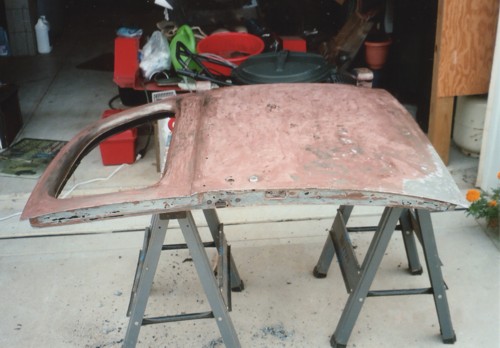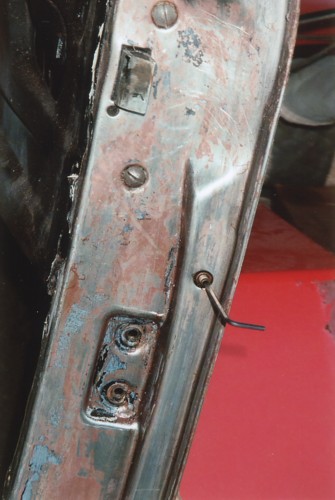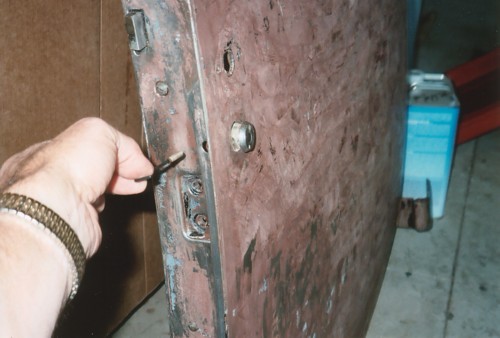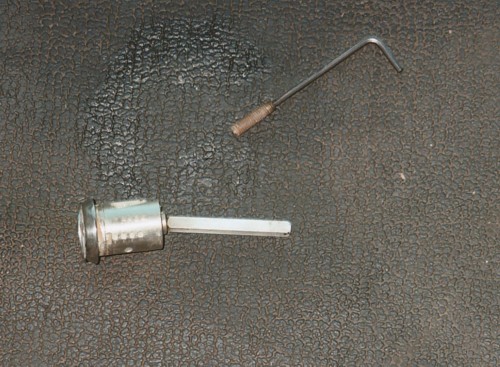My 1939 Ford Standard Coupe - The Tear Down

The Ford Standard Coupe had a single door lock, in the passenger side door. Their plan was for the driver to lock his door from the inside, slide across the seat to get out the passenger side, and then lock the door from the outside using the key.
I was puzzled as to how to remove the lock cylinder assembly. I could see a sheet metal "cup" inside the door that the cylinder fit into. However, this cup was tack welded to the door skin. You could see a "post" of about 1/4" diameter and maybe an inch long, that extended from the lock to the door side edge.

Choosing the correct allen hex wrench, I easily removed the set screw and the lock cylinder came right out the hole in the door skin. I have heard that these set screws can get rusted into place. Had that happened, I would have tried an "Easy-Out" to try unscrewing it. Had that failed, I would've drilled out the set screw and then re-threaded the post for a new one. Thankfully, in my case I had the easy problem!
The door structure is in quite good shape. The paint stripper left small areas of the old black paint and some primer. I generally just hit them with another dab of stripper and took them off with a small scrapper or wire brush.


The square shaft that extends from the cylinder is attached with a sort of hinged joint that allows for some lateral movement.